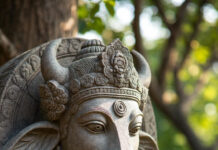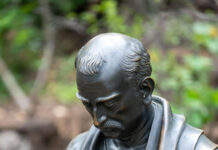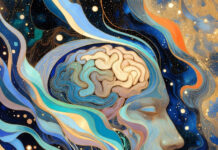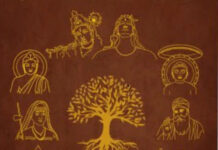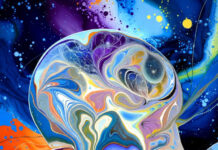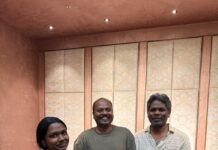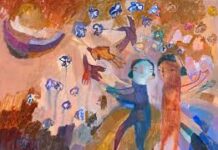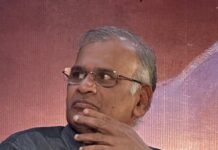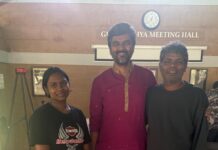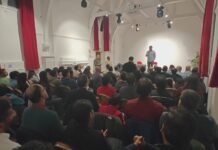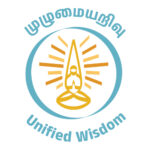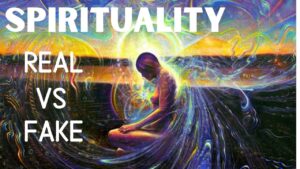
Dear Shri. Jeyamohan,
Greetings. Hope you are well. I’m writing to you after a long time.
This letter is a response to the responses your post about Balakumaran received. I believe there are two important views that have been put forth in favour of Balakumaran, via these responses.
First, that Balakumaran’s writing has use in life and therefore counts as literature. That is akin to saying, I learnt to love my mother by watching MGR’s movies and hence MGR is a great actor. I fail to understand why you haven’t pointed out the childishness in this argument.
Second, Balakumaran is a spiritualist. And hence, his writing is superior. That seems to be the argument. As far as I’m concerned, it is his ‘spiritual’ works that annoy me the most among all his writing. His spirituality is no different than the spirituality in the Rajini starrer, Baba. His writings present spirituality as mere wizardry. There’s another repulsive aspect in this. It is Balakumaran’s belief that he’s a great spiritualist and a Siddha; at least, he wants others to believe so. If you doubt what I’m saying, please look up his website http://balakumaranpesukirar.blogspot.com. On the home page, you will find Balakumaran’s face and Ram Surat Kumar’s face placed right next to each other, in the exact same style and size. As if to say that Balakumaran too is a great soul like the latter. One can also see this tone resonating in his writing every now and then. A Q&A he published when there was an earthquake in China, is an example of this. The hidden meaning, or aim, of this Q&A was to say that Balakumaran had a premonition about an earthquake or some such disaster in China. He had predicted that this would happen, and it had happened. So, it demonstrates what a great jñāni he is. That you did not openly criticise his puerile spirituality and the artifice in his actions is definitely disappointing to me.
– Rajendran.
P.S.:
The tone of this letter may anger you. You may even reply with censure. I want to say that I’m writing this letter in a frame of mind that’s willing to accept it, if it so happens.
I’m simply unable to fathom how you could’ve clubbed Sujatha and Balakumaran together. All right, leave it be. That’s a different topic altogether.
—
Dear Rajendran,
That letter about Balakumaran was written by a young reader. At that age, the attachment we develop for a writer and the passionate stances we take as a result of it are but natural. However, if one has a questful spirit, the same qualities can take us quite far. That is what I had said.
In that letter, I had also registered my opinion about the kind of spirituality that is foregrounded by Balakumaran. There is nothing further I have to say about the matter. I can write extensively if it be a literary critique of his works. There is no space in my writing for personal criticism.
For the same reason, I am not hurt by what you have written. It is your opinion, that is all. What I would like to talk about, though, are a few things that are connected with your opinion. It is about a new kind of mindset that has spread and is spreading in our country. I encounter it almost every day. Please read the paragraph below. I have taken this from Balakumaran’s website.
“…On top of all this, the incident that took place at the Ammankudi temple built by the Chola commander-in-chief Krishnan Raman alias Brahmarayar is still a mystery to me.
While circumambulating the temple after worshipping Goddess Durga, I caught sight of a Brahmin, nearly ninety years of age, sitting in a dark corner of the temple. I directed the torch light on him to figure out what he was doing there; displeased with that, he walked in the direction of the temple wall and disappeared from sight. When I looked again, I could only see a lingam in his place. Trembling with fright, I turned to look at you; the expression on your face was all-knowing. ‘That’s how it is in these parts’, you said, with not even an iota of anxiety, and walked away.
At that juncture, I recalled what you had said a long time before. ‘This Durga temple was built with great love by the Chola commander-in-chief Krishan Raman alias Brahmarayar. Brahmarayar was a Brahmin. He will never leave this temple.’
It became apparent to me that alongside books, places and stone inscriptions connected with the Cholas, friends who nurture an extraordinary love for Chola history, researchers and the like, you are also well-acquainted with the spirits—albeit in a different form—that lived and passed many hundreds of years ago in the Chola kingdom; when this dawned on me, I understood that ‘Udaiyaar’ isn’t just another novel.
You haven’t written ‘Udaiyaar,’ the crown jewel among your works. You lived with the Cholas a thousand years ago, and you live with them, even today. What you are doing, then, is sharing the life that you lived. That is the truth.”
What is the mentality that wrote this letter? You can call it a puranic mindset. The mentality of an average Hindu is made up of such mythical constructions. It’s something that has gone on for many centuries in our societies. It has a historical background and a philosophical background.
We have employed this mental make-up for ages as a mechanism to realise that which is the truth. We have an internal logic and syntax for it, too. In our religion, we will find both the lowest of lows and highest of highs manifested by this mindset.
Seen through a historical lens, this is how the puranic-mindset evolved: Many thousands of tribes lived across the Indian landmass. They had thousands of beliefs, folk tales, symbolisms, and metaphors for god. These were strung together by the pure philosophical concept of Brahmam (Absolute). That is how major religions developed in India. The puranic tradition is something that developed at this time of interlacing, in order to to aid such an amalgamation. The very function of myths is to bring together the numerous beliefs, images, and forms of god. The most important myths of the Hindu jñāna traditions (systems of philosophical-vision) too evolved in this manner.
Later, these myths became tools for the exposition of philosophy, because imagery is indispensable in philosophical discourse. Our mythologies ensured a steady supply of images. Over time, the later mythologies developed into a meta-language in which our philosophies were dealt with extensively. They live on today as the philosophic face of mythology.
Let’s take, for instance, the myth about Ambikai’s killing of Raththa Beejasuran. Every drop of blood from the demon-asuran births yet another Raththa Beejasuran. As Ambikai begins to wage war against him, he grows in number every time he is attacked. This causes the goddess to cleave into two. One of her morphs into a blood thirsty demoness. The demonness licks and laps up the droplets of blood shed by Raththa Beejasuran at the point of Goddess Ambika’s arrows. Beejasuran is destroyed.
The creation and development of the mighty Goddess Ambikai from the imagery of a mother goddess forms the historical backdrop to this myth. But this story possesses a profound philosophical symbolism, too. One that is of immense importance in the dhyana traditions. It posits that one cannot wage war against primal desires, for, when you wage such a war, those desires are sure to magnify. Therefore, our consciousness itself has to split in two and become both the Ambikai, and the demoness. Those who practise meditation will understand this even better.
This is how we must view mythology. This is how mythology was taught. But, come the 19th century, our puranic tradition vanished. The great preachers of purana, who were able to weave myth with philosophy and teach it in an elementary way, were no longer to be found.
As a result, the environment transformed into one in which mythology was read and understood very superficially as tales of fantasy. These days, when we go to any temple, we see the priest narrating some random fantasy of his choice. Many of those stories are quite stupid.
This letter has been written from the standpoint of a simple puranic-mindset, similar to that of the priest I described above. This mindset is quite widespread among the Hindus today. The ones who take advantage of it are those who predominate our television screens and public stages. In fact, every such personality associated with the Hindu religion seems like that today. They present themselves as miracle-men. They utter prophecies. They offer blessings. They heal illnesses. They walk on water. They swim in fire.
In doing so, they eclipse the entire philosophical depth of the Indian jñāna traditions. In the popular Hindu tradition of the present day there is no place for Ramakrishna Paramahamsar or Ramanar or Vivekanandar or Narayana Guru. They were not people who performed miracles. However, the people who attribute wonders to these men, convert them into miracle-makers, and proclaim themselves to be their heirs, are numerous.
I have seen Yogi Ram Surat Kumar. I have even interviewed him. I will not hesitate to say that I know him—in every respect. The fantastical stories that these people foist on him are an insult to his spiritual being as a truth-seeker. He is not a street magician. He is a man of wisdom, a jñāni.
More recently, there have been many other things, too, that have gotten mixed up with this trend. Yogam is a way of wisdom that has existed in our country since time immemorial. Its source text is the Patanjali Yoga Sutram. What it presents is a strict science. It is not even a spiritual text. Yogam is nothing but the twin philosophical-vision of Sankhyam which is a materialist philosophical-vision.
Sankhyam says that this universe was once a single, unified cosmic presence. Owing to the imbalance of the three gunas or three humors, it attained the pluralism that is manifest today. Similarly, the Purushan who stands witness to the universe has also become multitudinous. When he sheds this pluralism and reaches the singular state, he realises the universe in its state of a unified absolute. This is the mukthi that yogam talks of. A state of oneness. Or, a liberated state. Yogam calls it kaivalyam or the pure-state.
Yogam propounded the various paths to attain this state. Later, the Jains and Buddhists developed on it; subsequently, many tantrics too expounded the path of yogam. The truth is that these are all merely different practises or expository systems. The tantrics who were given to the use of symbolism for explaining any idea, had many templates at their disposal. They attempted to fit those into yogam as well.
That is what resulted in the coinage of the nine energy centres or chakras—from muladharam to sahasraram. Before yogam came into the picture, the tantrics had attempted to juxtapose these chakras onto the idea of the universe. For instance, what is muladharam? It is nothing but kamam or the force of desire that they termed thus. It is a force that resides in all life-forms. They visualised it as being centred at a point behind the sex organ. Then, there’s the seat of hunger. Then, the breath…and so on till we get to the nine chakras.
To meditate on these energy centres, exercise full control over them, and attain the absolute is the crux of the tantrics’ yogic path. What they call siddhi or mukthi or absolute is the same as what Patanjali postulates. Chitta Vritti Nirodham—cessation of the activity of the mind. Through it, one attains wisdom-absolute. In other words, wisdom becomes itself. You can see Ramakrishnar, Ramanar and Narayana Guru attempting to clarify this over and over. What the poet Bharathi conveyed through his line ‘Pure knowledge is God’, is what they tried to convey in their own way. ‘To seat in knowledge as knowledge,’ says Narayana Guru. ‘Like a salt-doll knowing the sea’, says Ramakrishnar.
The tantrics, and the ones who carried forward their legacy, the siddhars, both of whom attempted to explain wisdom and its many paths through metaphors, presented several ideas. The common folk absorbed many of their metaphors literally. They began to claim that there are nine lotuses (lotus being the symbol for chakra) in the body and that the kundalini-energy which emanates from the muladharam can be touched by hand. They went on to say that those who had so attained jñāna could perform miracles and know the past, the present, and the future.
Even the naked truth, that none of the jñānis of our times have performed miracles, does not strike them. They are able to make sense of wise men only by foisting miracles on them. What do you say to someone who thinks that true wisdom is the same as placing a hand on another’s head and securing them a change of job?
All of a sudden, our milieu seems filled with such people; and those who take advantage of such people are pouring forth too. Talks about yogam and meditation are heard more often in our midst. I meet at least one person every day who, having heard about such terms in passing and connected them loosely with the myths about siddhars, claims to have been bestowed with spiritual powers. They say, I meditated and saw a glow between my eyes; electricity flowed in my finger-tips; I floated in the sky. It is true that some of them say these things as a result of real hallucinations, too.
Meditation and yogam have absolutely nothing to do with such street-magician-like activities. Anima and other such siddhis have no connection with wisdom—they are just empty tricks and tall claims. True wisdom is ‘becoming that.’ The texts refer to is as shakshatkaram or direct realisation. The path to it is not easy. The Upanishads call it shurasyadhara. It is akin to walking on a razor’s edge.
He who understands that will neither be under the illusion that the physical laws of this world can be transgressed nor will it hold his interest. He will focus his being on the law that governs all of these laws. And that he will become.
Je.
First published on Aug 27, 2009
(Translated from the original Tamil essay, Anmigam, Poli-anmigam, Madham, by Jeymohan https://www.jeyamohan.in/3720/)
Translated by Priyamvada Ramkumar
